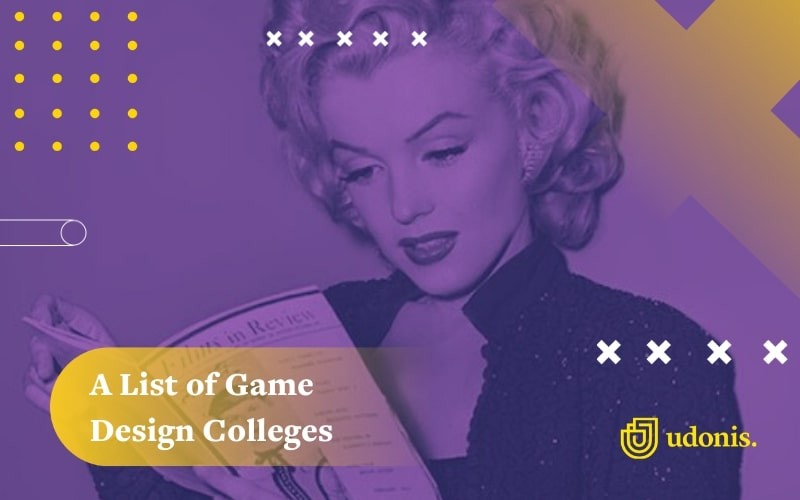What’s the right GEO for your next media buying campaign?
If you are a business owner, marketing, or biz dev executive you’ve probably been thinking about expanding into different countries or picking the right market to kickstart your new product.
Penetrating a new market can often be hard and challenging. But if it’s done properly, it will reward your business with additional volume and revenue.
About Media Buying Campaign Geos
Most advertisers prefer getting traffic from specific GEOs. This is because they have certain advertising goals they want to achieve and they know which type of customers they want to attract.
The first step to entering a new market is to actually decide which market will carry the biggest opportunity for your business.
Very common classification of markets is based on tiers — considering the financial and overall development of the country, cost of advertising, and the current political situation.
Since there is no unified marketing theory on this topic, you might stumble upon studies that will indicate that there are 3 tiers, 4 tiers, or even 5 tiers of countries.
Each tier will carry a certain type of opportunities and of course, its own set of problems, which we’ll describe & tackle in the upcoming paragraphs.
Based on the factors above and the experience which we have in running global marketing campaigns, we’ve classified countries/markets into 4 tiers.
Let’s dive into it…
Supporting Data for Our Media Buying Model

We modeled a formula taking into consideration the Human Development Index (HDI) and Gross Domestic Product (GDP) per Capita. Results are corresponding with what we expected, and these findings can be applied to any marketing model.
When planning your campaign there are plenty of other factors to take into consideration. The cost of advertising will be directly linked to the market size, society development, and market opportunities based on the GDP. Therefore, tiers are not only about purchasing power, they are about all sorts of factors. For example, some advertising criteria for determining tier countries are:
- Conversion costs
- Traffic costs
- Country laws and regulations
Tier 1 Markets & Countries
Most expensive and the most challenging one. But also the biggest market with a wide variety of traffic sources.
When meeting our criteria, in this Tier we can find the following countries: Norway, Switzerland, United States, Germany, Australia, Luxembourg, Ireland, Iceland, Sweden, Canada, Netherlands, United Kingdom, Singapore, Japan, Hong Kong, Denmark, France & China.

There are many challenges in Tier 1, this market is strictly regulated, and breaches of data protection can be legally pursued. General Data Protection Regulation, more commonly known as GDPR regulated how data should be handled and brought a whole different set of rules to anyone working with personal data.
Traffic in these countries will be very expensive — 2x, 3x or even more expensive than countries in Tier 2. You should have in mind that your ad is competing with many more ads on the same market.
The average CPC (Cost-Per-Click) has more than doubled in the last five years. In this market, there will be a lot of competition, with experts working in this field for years. The competitive market also means that customers are fed up with different offers — you’ll need to step up your game with attractive offers and creatives.
But if your organization manages to overcome the initial challenge, the reward is going to be quite lucrative, as the customers in Tier 1 markers have deeper pockets than the rest of the world. Plus, they’re not afraid to spend or adopt new technology if they like what your organization is offering. For example, iOS software is much more popular in Tier 1 than any other tier.
China is an exception in our classification because China doesn’t meet our criteria of GDP and HDI, but we can definitely put China in Tier 1 because of the market size and regulatory challenges that we need to meet before starting on such a dispersed market.
Finally, there is a common misconception that the majority of this market speaks English perfectly. However, if you take a closer look, you will find out that’s not necessarily the case. Not everyone in, for example, Germany and Netherlands, speak English. For this reason, when you’re launching campaigns in some of these countries, don’t make English-only campaigns. At least run a split test of two languages and optimize the campaigns depending on the results.
Key Characteristics of Tier 1 Markets
– Highly-developed spending habits
– High buying power
– High technology adoption rates
– Super-competitive
– Highly-regulated
– High media buying costs (CPM)
Tier 2 Markets & Countries
The Tier 2 market is the ideal opportunity for advertisers looking to enter bigger markets. Generally, it has fewer regulations than Tier 1 market and the traffic is relatively affordable. However, it’s important to mention that the prices can vary across Tier 2 because of the broadness of the market.
Some countries in Tier 2 can give your business a nice boost in volume and revenues, but only in rare scenarios, they will provide opportunities and scale which are characteristic of Tier 1 countries.
In Tier 2 we can find the following countries: Qatar, Korea, Austria, Belgium, Italy, Finland, Spain, New Zealand, Israel, United Arab Emirates, Saudi Arabia, Czech Republic, Poland, Greece, Slovenia, Russian Federation, Portugal, Argentina… To be more exact, we have 39 countries in this Tier.
This market is dispersed, in terms of culture and language, so there is a need for localization and customization of landing pages, creative visuals, translations, etc…
In Tier 2 we are going to find a wide range of countries around the globe, with lower rates of GDP and HDI, but still, a potential target market when our marketing strategies meet the predispositions of the market with thoughtful planning.
It’s important to know that Tier 3 traffic doesn’t always bring high-quality users. Here, conversion rates can fluctuate. If you want to sell an identical product in Tier 1 and Tier 2, the second tier is probably going to require much more clicks until that happens.

Key Characteristics of Tier 2 Markets
– Average buying bower
– Moderate technology adoption rates
– Semi-competitive
– Regulated
– Medium media buying costs (CPM)
Tier 3 Markets & Countries
Consisting of the majority of third-world countries, Tier 3 is almost not regulated by the authorities and traffic will be very cheap and not highly competitive since the majority of advertisers don’t find it attractive.
However, in this Tier, payouts, and conversion rates are significantly lower than in Tier 1 and 2.
Moreover, since the majority of this Tier’s population doesn’t speak English, you will need to localize your ads. Moreover, you will also need to consider a whole set of cultural and religious specifics.
Countries in Tier 3 have very low GDP — automatically resulting in lower HDI. The population of these countries is not that significant, penetration of the market is difficult and it needs careful planning.
Tier 3 countries are a perfect place to test your first media buying campaigns. Here, you can try out different strategies and dive deep into optimization. Then, apply what you learned to your higher-tier campaigns.
Here we can find countries like Jamaica, Dominica, Vietnam, Angola, Bolivia, Namibia, Nigeria, Samoa, Pakistan, Kenya, Sudan, Ghana, Bhutan, Cameroon, Nepal, Zimbabwe, Ethiopia, Uganda…

Key Characteristics of Tier 3 Markets
– Lower buying power
– Low technology adoption rates
– Low competition
– Law regulations can vary from country to country
– Low media buying costs (CPM)
Tier 4 Markets & Countries
A market that’s almost unpenetrable because of the lack of channels and political confinement — there will be almost no channels to communicate with your audience, media channels are usually almost-to-none existent or highly politically regulated. Countries in Tier 4 are riddled with wars and conflicts.
Here we can find countries like the Syrian Arab Republic or North Korea. For these countries, there is no data from The World Bank. In Tier 4 we’ve also placed any country with GDP per Capita lower than 1000 USD — countries like Burkina Faso, Malawi, Togo, Chad, Niger, Haiti, Mali…
Key Characteristics of Tier 4 Markets
– Inferior buying power
– Underdeveloped or no media infrastructure
– Unstable political circumstances
– Impossible to penetrate without a physical presence
– No legal regulations
– No data for media buying costs (CPM)
Which Tier Should You Focus on?
When it comes to tiers, never focus on one tier only. The key to successful global campaigns is diversifying them.
Testing different GEOs can bring you important benefits. The first one is – data. Cheap traffic and high volume can bring you valuable insights into what your potential clients like, what kinds of creatives they prefer, and all sorts of other data.
Moreover, Tier 1 often comes with certain restrictions, while other Tiers give you much more freedom.
Another reason why you should dive into different tiers are countries that have high potential growth. At the moment, they may be underestimated by advertisers, but their economies and use of technology may be thriving,
Finally, lower tiers can bring sustainable revenues. Why? Well, the competition isn’t as rough as in Tier 1, and their budgets are lower as well.
Data Sources for Media Buying
Categorization on 4 Tiers using Gross Domestic Product (GDP) data from The World Bank and Human Development Index (HDI) for 2017 from United Nations Development Programme. We’ve also taken into consideration years of experience working in these markets. The cost of advertising in this categorization is directly connected with the human development of the nations (HDI), market size and overall population size. Exceptions may apply.




![Top 11 Mobile Intelligence Providers [Pricing Included]](/static/0e4f14bdef6ce961ec3302e21c4bf275/0ccb9/mobile-inteligence-providers.png)


Comments